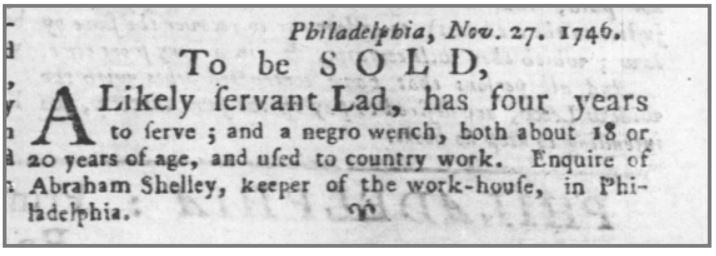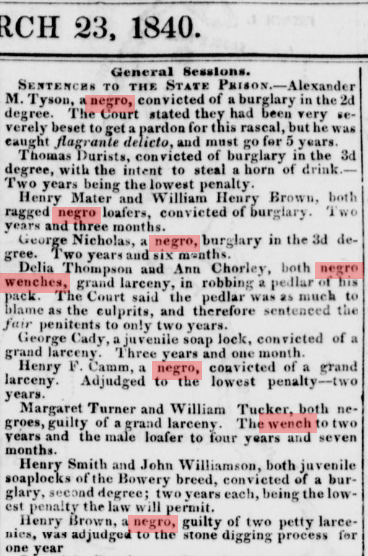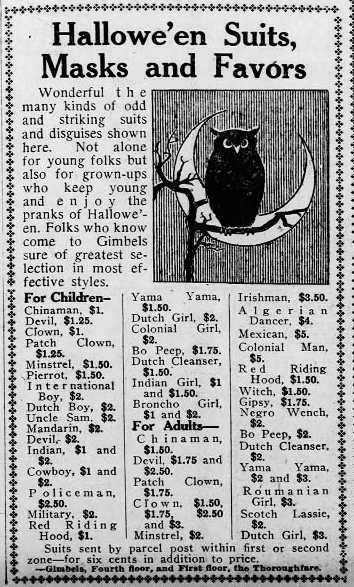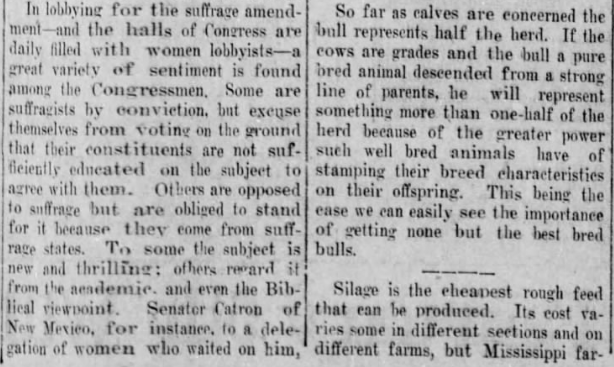What is a “Negro Wench?”
A “Negro Wench,” — to my 21st century ears, the phrase sounds derogatory and demeaning. Yet in 1801, my family ancestor Nehemiah Dunham used the phrase in a legal document to refer to one of his slaves. That made me curious. What exactly did he mean?
Wench
A wench generally (not a “negro wench” specifically) is a “13th-century word meaning a female infant or a young unmarried woman[, which] quickly acquired negative connotations: from the late 14th century, in Langland and Chaucer it is used to mean ‘a wanton woman; a mistress’.”) David Shariatmadari, “Eight Words That Reveal the Sexism at the Heart of the English Language,” The Guardian (Jan. 27, 2016) (describing pejoration of language related to women and pointing to the transformation of the term “wench”)(available at https://www.theguardian.com/commentisfree/2016/jan/27/eight-words-sexism-heart-english-language).
According to Shariatmadari, the term “wench,” acquired a derogatory meaning through usage over time. Even standing alone, the term “wench” implies the concept of servitude. A descriptor has often been added to specify the location or type of service: a “bar wench”; a “kitchen wench” or a “tavern wench”. The term is also laced with sexual connotation and has also be used to describe a prostitute or a female providing sexual services to another. Note the contemporary (and arguably historic) usage of the phrase “negro bed wench.” See Shafiqah Hudson, “‘Negro Bed Wench?’ Negro, Please,” Ebony (2013) (available at https://www.ebony.com/news/negro-bed-wench-negro-please-405/).
Negro + Wench: “Negro Wench” Meaning From American Advertisements
It wasn’t a big leap for early Americans to tack on the racial identifier “negro” to wench to describe female slaves. The “negro wench” phraseology appears to have been common in the 18th and 19th centuries, including in New Jersey and Pennsylvania. Slave and runaway advertisements were prevalent in early American newspapers. By 1804 “and long afterwards, the local papers were full of advertisements, closing with the stereotyped direction, ‘for terms apply to the printer’ [editor], and announcing ‘for sale’ . . . ‘a likely negro Wench twenty-five years of age.’ . . . Nor was it less common for the sheriff, who had levied on a judgment debtor’s property, to make a return like the following: ‘By virtue of the within writ I have seized and taken a Wench named Rachel, two beddings, one cow.'” Report of the Bureau of Statistics of Labor and Industries contained in Vol. II Documents of the One Hundred and Tenth Legislature of the State of New Jersey and the Forty-First Under the New Constitution Documents 10 to 23, Inclusive, at 259 (Courier Publ’g Assn. 1886) (citations omitted); see also Mary Domciz, “African American Labor in the 18th Century, ” in Woven with Words: A Collection of African American History in Berks County, edited by Dr. Laurie Grobman & Dr. Gary Kunkelman (Penn. St. Berks 2006) (quoting two late 18th-century advertisements in the Pennsylvania Gazette newspaper offering negro/negroe wenches for sale).
The advertisements, which are for the sale or capture of slaves, specify the ages of the women being sold or sought. From these advertisements, several themes emerge about the early Americans’ usage of and meaning of the phrase “negro wench.”
- Negro wench was used most consistently to describe a female slave of at least child-bearing age. In the examples, they range in age from age 15 to age 38. By contrast, an advertisement referring to a daughter of a slave used the phrase “female child”, not negro wench, to describe the four-year-old girl.
- Often, negro wench was used in conjunction with a description of whether the female is pregnant or already has a child.
- When a physical description of a negro wench was made, references were made to their sexuality. For example, one advertisement describes a 38-year-old negro wench as “short stature, pretty lusty, and supposed to be with child.”
While this is not a comprehensive listing, it represents a small sampling from the years 1731 through 1824.
- Age 15 Years Old. The Pennsylvania Gazette (Philadelphia, B. Franklin ed.) at 4 (Nov. 17, 1731) “has had Small-pox”

- Age 17 Years Old. The Independent Gazetteer (Philadelphia) at 1 (Feb. 4, 1783) “understands cooking and all kinds of house-work”

- Age 17 Years Old. American Watchman and Delaware Advertiser (Wilmington, Del.) at 3 (Jan. 27, 1824) “healthy and stout”

- Age 18 Years Old. The Independent Gazetteer (Philadelphia) at 1 (Feb. 4, 1783) “With a child one month old”

- Age 18 or 20 Years Old. The Pennsylvania Gazette (Philadelphia) at 3 (Dec. 2, 1746) “used to country work”

- Age 18 Years Old. The New York Evening Post at 3 (Oct. 7, 1802) “very healthy, active, sober, honest, and industrious–and has a male child about one year old.”

- Age 19 Years Old. The Pennsylvania Gazette (Philadelphia) at 3 (Jan. 22, 1756) “fit for town or country business”

- Age 20 Years Old. The National Intelligencer and Washington Advertiser (Washington D.C.) at 3 (Aug. 31, 1804) “apparently far advanced in pregnancy”

- Age 25 Years Old. The Pennsylvania Gazette (Philadelphia) at 3 (Jul. 12, 1775) “with a Female Child, about 4 Years old”

- Age 30 Years Old. The Pennsylvania Packet (Philadelphia) at 4 (Apr. 15, 1779) “was lately bought at Cambridge in Talbot County, Maryland”

- Age 38 Years Old. The Independent Gazetteer (Philadelphia) at 3 (June 14, 1783) “short stature, pretty lusty, and supposed to be with child”

1823. Beyond advertisements for runaway slaves and sales, American newspapers and accounts confirm the derogatory and demeaning nature conveyed by the phrase “negro wench.” In one account, published in the Portland Gazette, allegedly from Thatcher’s Journals, the storyteller speaks of his mortification and shame as to being approached by a “negro wench” in public, apparently the victim of some horrific practical joke. The writer uses the phrases “d*****d madam nig,” “d*****d rascal bish,” “black bish rascal,” “black bish,” and “rascal wench,” all to tell a story commanding “an inexhaustible fund of merriment and humour.” “Extract from Thather’s Journal,” The Portland Gazette, (Portland, ME Nov. 11, 1823), Chronicling America: Historic American Newspapers, Lib. of Congress (available at https://chroniclingamerica.loc.gov/lccn/sn83016083/1823-11-11/ed-1/seq-4/).

1825-1899
Something that emerges during this time period is the use of the term “negro wench” in conjunction with illegal, illicit, wrongful, or unsavory conduct. For example, this article in the New York Herald describes the allegedly corrupting influence of a “negro wench” on a young white orphan. The New York Herald, at 2 (May 06, 1837), Chronicling America: Historic American Newspapers, Lib. of Congress (available at https://chroniclingamerica.loc.gov/lccn/sn83030311/1837-05-06/ed-1/seq-2/).

1840. Numerous references can be found in “Sentences to the State Prison,” column on the front page of the Morning Herald. The New York Herald, Morning Ed. at 1 (New York, Mar. 23, 1840), Chronicling America: Historic American Newspapers, Lib. of Congress (available at https://chroniclingamerica.loc.gov/lccn/sn83030312/1840-03-23/ed-1/seq-1/).

1900 & Beyond
As reflected in certain newspaper advertisements and articles, the term “negro wench” was still in use into the 20th century.
1916. In this advertisement, there is a “negro wench” Halloween costume available for purchase at the Gimbels department store in Philadelphia. The Philadelphia Inquirer at 9 (Oct. 21 1916)

1916. In the context of Congress’s vote on the question of women’s suffrage, this article quoted Senator Saulsbury of Delaware as opposing women’s suffrage. One of the reasons he opposed suffrage for all woman was because, “‘It would be unthinkable to give every negro wench the vote.'” His other reason was no more prescient. “‘Women,’ he said, ‘should remain charming and domestic as they always have been.'” Gilson Gardner, “To Vote Again on Woman’s Suffrage,” Vicksburg Evening Post at 2 (Vicksburg, MS, Jan. 28, 1916).
Return to The Ugly Truth: Examining Slavery in Hunterdon County, New Jersey




2 thoughts on ““Negro Wench” Appendix: What is a “Negro Wench?””